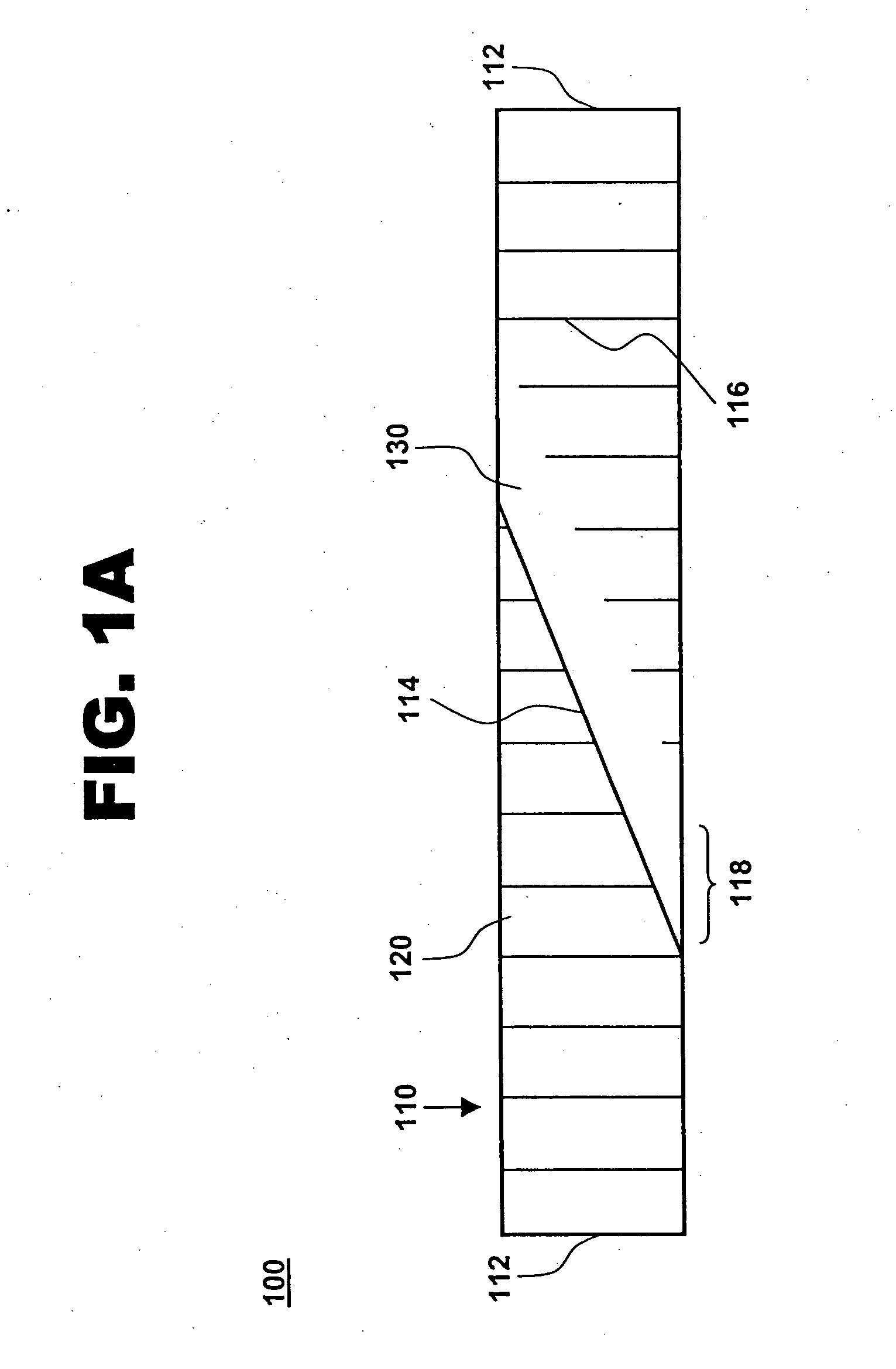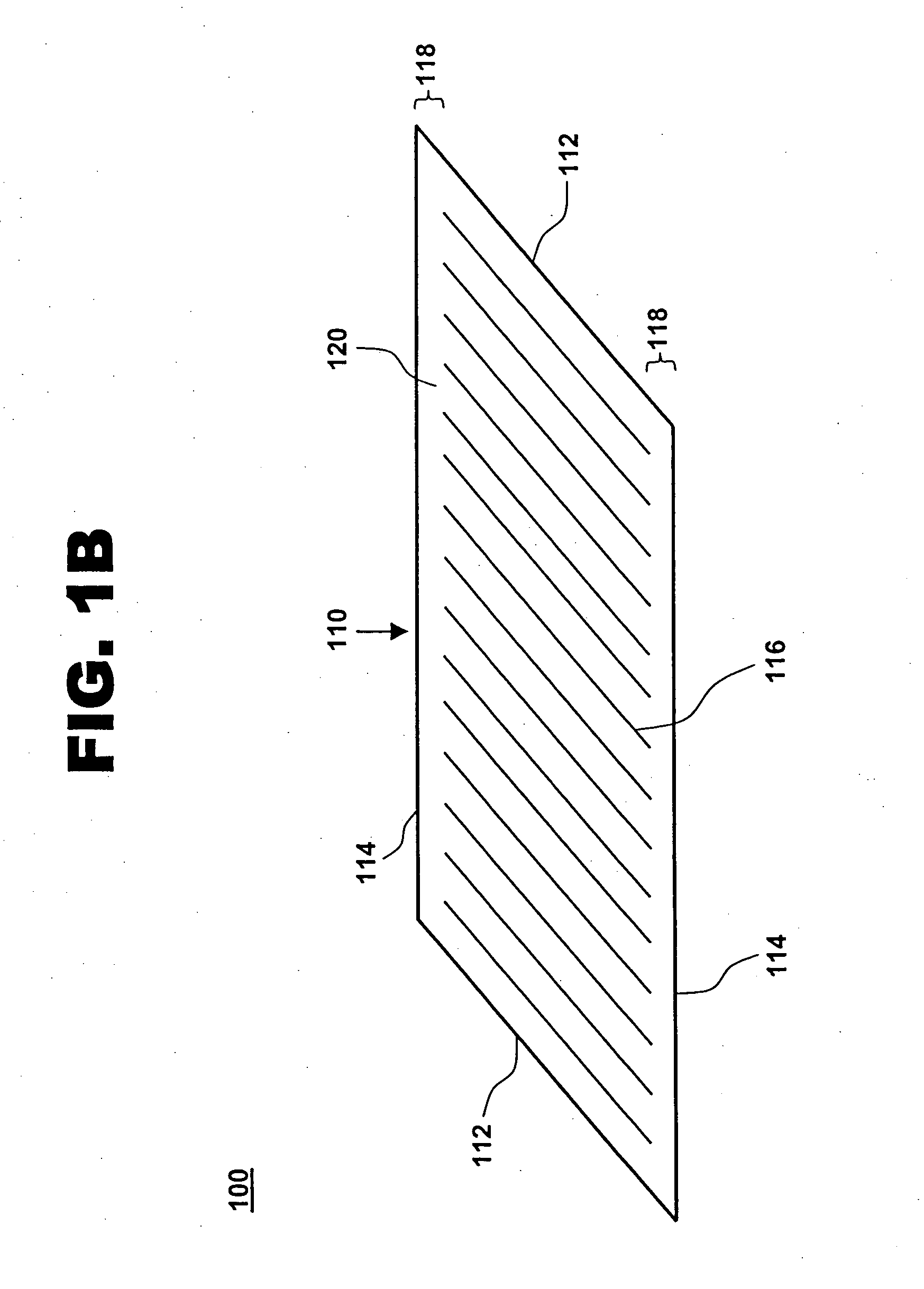Compliant, porous, rolled stent
a stent and porous technology, applied in the field of biomedical devices, can solve the problems of large proportion of treated vessels restenosis, conventional mesh and tubular stents may be too rigid to easily negotiate tortuous vessels, and the end of restenosis of the stent may not be easily accessibl
- Summary
- Abstract
- Description
- Claims
- Application Information
AI Technical Summary
Benefits of technology
Problems solved by technology
Method used
Image
Examples
Embodiment Construction
[0018] One aspect of the present invention is a compliant, porous, rolled stent. One embodiment of the stent, in accordance with the present invention, is illustrated in FIGS. 1A and 1B at 100. A completed stent is shown in FIG. 1A, while the same stent is shown reduced in size and in a preliminary, unrolled configuration in FIG. 1B. Stent 100 includes a stent framework 110 and a therapeutic coating 120. Stent framework 110 has two short sides 112 and two long sides 114 and includes a plurality of slits 116 formed parallel to short sides 112. Edge portions 118 adjacent to long sides 114 are unslit and form a spiral backbone 130 in the rolled stent. Short sides 112 form the proximal and distal ends of stent 100.
[0019] Stent framework 110 may be made of a wide variety of medical implantable materials, such as a shape-memory material, a biocompatible material, a biodegradable material, a metal, a ceramic, a polymer, and combinations thereof. For example, the framework may comprise a s...
PUM
 Login to View More
Login to View More Abstract
Description
Claims
Application Information
 Login to View More
Login to View More - R&D
- Intellectual Property
- Life Sciences
- Materials
- Tech Scout
- Unparalleled Data Quality
- Higher Quality Content
- 60% Fewer Hallucinations
Browse by: Latest US Patents, China's latest patents, Technical Efficacy Thesaurus, Application Domain, Technology Topic, Popular Technical Reports.
© 2025 PatSnap. All rights reserved.Legal|Privacy policy|Modern Slavery Act Transparency Statement|Sitemap|About US| Contact US: help@patsnap.com



